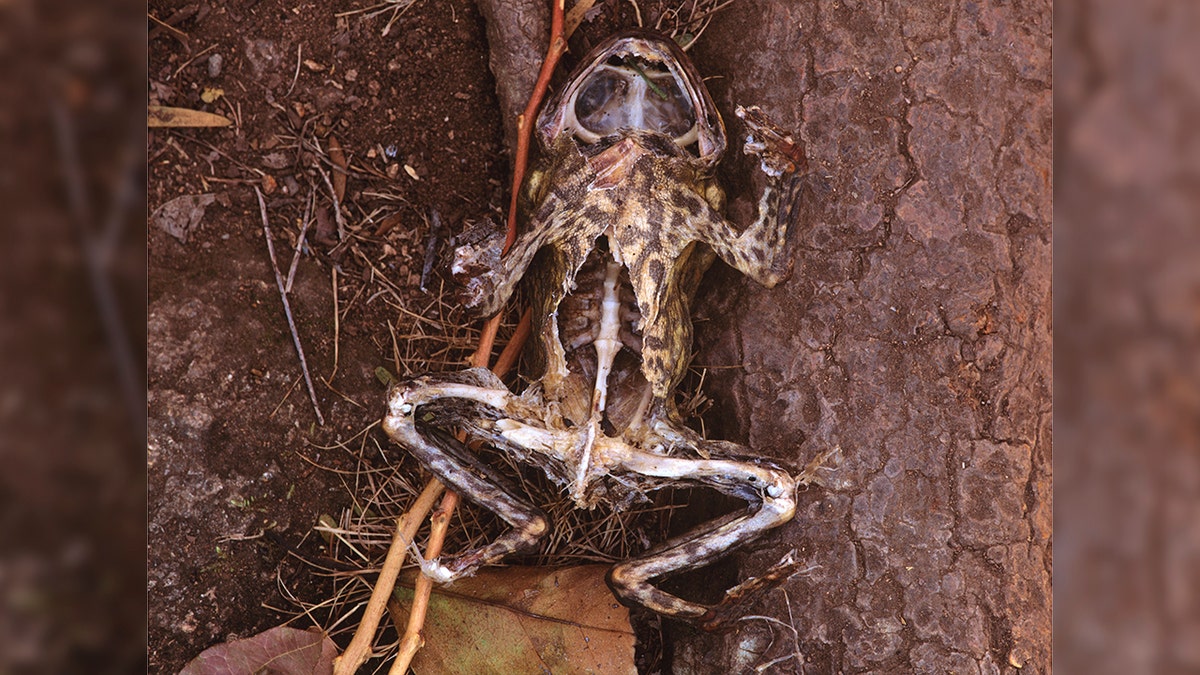Fox News Flash top headlines for Oct. 27
Fox News Flash top headlines for Oct. 27are here. Check out what's clicking on Foxnews.com
Highly intelligent Australian water rats have learned how to kill poisonous cane toads in Australia by eating their hearts and carving their organs with "surgical precision," according to research published in Australian Mammalogy.
In just two years, the semi-aquatic rodents have adapted to safely kill the invasive species in the Kimberly region of Western Australia by removing the gallbladder and feasting on its heart.
Cane toads were first introduced to Queensland in the 1930s and have been slowly expanding west, where they've devastated native animals, driving some to the point of extinction, according to the Guardian.
CLIMATE ACTIVIST GRETA THUNBERG NOW HAS A BEETLE NAMED AFTER HER

Highly intelligent Australian water rats have learned how to kill poisonous cane toads in Australia by eating their hearts and carving their organs with "surgical precision," according to research published in Australian Mammalogy. (Getty)
The rats, also known as the rakali, were discovered to be fighting back against the invasive species.
Dr. Marissa Parrott, the paper's co-author, said that scientists began to notice the dead cane toads appearing cut open in a "very distinctive" way.
“It was a small area of creek, three to five meters in size, and every day we were finding new dead cane toads,” she said, according to the outlet. “Up to five every single morning."
“They were flipping them over, making a very distinctive, almost surgical precision cut down the chest. They would even remove the gallbladder outside the body, which contains toxic bile salts. They knew to remove that bit.”
She added that the rats understood which areas of the toad were poisonous, using their sharp teeth and dextrous hands to eat the non-toxic parts while leaving the poisonous areas stripped.
“In the medium-sized toads, as well as eating the heart and liver, they would strip off the toxic skin from one or both legs and eat the non-toxic thigh muscle," Parrott said, according to the Guardian. “They have very strong sharp teeth, very dextrous little hands. They can pick up a fish or a yabby and open them up very quickly and target the areas they like.”

Cane toad (Bufo marinus), corpse eaten by a Water rat (Hydromys chrysogaster), one of the few native species that can kill them with impunity, either by being immune to the poison, or by avoiding contact with the poison glands. Queensland, Australia. (Photo by Auscape/Universal Images Group via Getty Images)
Researchers observed 38 toad carcasses floating in the river or creekbed over 15 days, with all of the carcasses having a cut in their chest areas that measured 10.8mm (1.08cm) vertically and 12.2mm (1.2cm) horizontally.
IVAN MILAT, AUSTRALIA'S MOST NOTORIOUS SERIAL KILLER, DIES IN PRISON AT 74
The study suggested the rats purposely targeted the bigger cane toads - who only make up 2.5 percent of the toad population in the area while making up 74 percent of the carcasses found, according to the Guardian. The rats were also found to hold the amphibians on their back, harvesting on their bodies while they were still alive.
“Water rats are quite large themselves,” Parrott said, according to the outlet. “They have the power to subdue a larger toad and get a bigger payload, get that larger heart and larger liver. By killing those larger toads, it may be easier to avoid the toxic organs like the gallbladder.”
Researchers believe the rats either learned the technique by trial and error or had previous experience from eating Australian native toxic frogs. They added that parental training could have assisted in developing younger rats to learn the technique.
“The parents have quite a long period of care with their offspring. The baby rats will stay with their mother and they can learn from their parents. It would make very good sense that their parents are teaching their children how to kill those cane toads and avoid those poisonous areas," Parrott said, according to the outlet.
She hopes to shed light on the predatorial and environmental threats faced by these rats - while showing the importance and intelligence of the native rodents.
CLICK HERE TO GET THE FOX NEWS APP
“[The findings] show the intelligence of our native rodents,” she said. “A lot of people don’t really know we have native rodents in Australia. A story like this has really raised their profile and made people not only realize they are very clever but they are a very beautiful animal we should be protecting.”





















